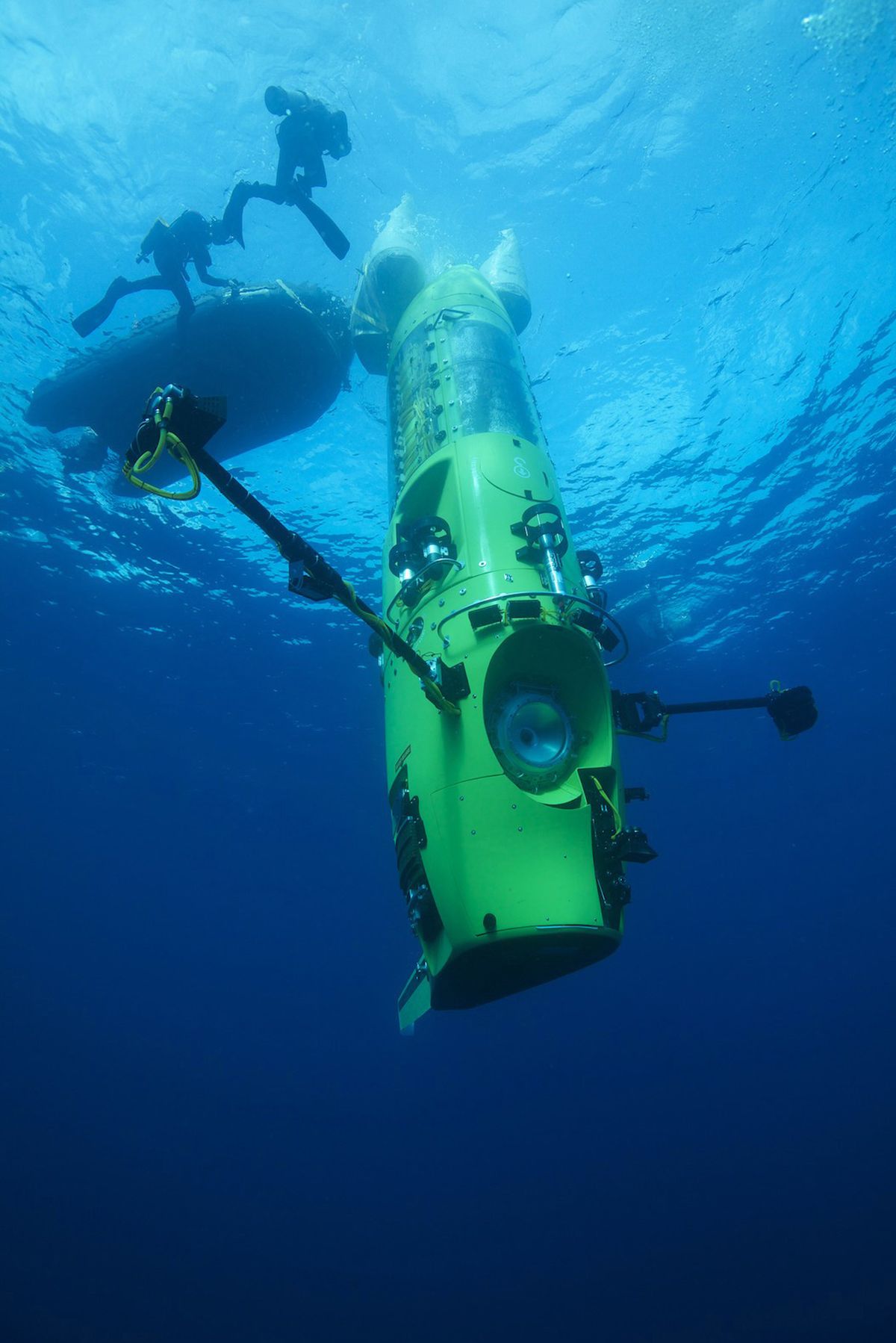Deep-sea ‘awakening’
Cameron hopes 7-mile solo plunge puts world’s oceans in public eye

WASHINGTON – Earth’s lost frontier is about to be explored firsthand after more than half a century. It’s a mission to the deepest part of the ocean, so deep that the pressure is the equivalent of three SUVs sitting on your toe.
And it’s being launched by the rich and famous.
In the next several days, James Cameron, the director of “Titanic,” “Avatar” and “The Abyss,” plans to dive nearly seven miles down in a one-man lime green submarine that he helped design. The location is the Mariana Trench in the South Pacific.
Airline and telecom entrepreneur Richard Branson is not far behind. Former Google CEO Eric Schmidt is funding another deep water submarine project that’s still on the drawing boards.
More people have been to the moon than to this place beneath the sea roughly 200 miles southwest of Guam.
Only two people, Swiss engineer Jacques Piccard and U.S. Navy Capt. Don Walsh, have been to this underwater valley. And they spent only 20 minutes there. Their sub kicked up so much of the sea floor that all they could see out the window was a murky fog.
That dive was in 1960 and no one has been back since. Unmanned subs have ventured that deep, but there’s a difference between seeing something remotely on a computer monitor and being there, seeing it up close.
“It’s the last frontier for science and exploration on this planet,” Cameron said in a ship-to-shore interview with the Associated Press. “It’s to draw public attention to the oceans and continued need for exploration as well as stewardship. It would be a good thing if we understand the oceans before we destroy the life that’s in them.”
Cameron plans to spend at least six hours on the bottom in his cramped, almost form-fitting sub, Deepsea Challenger. He plans to film an undersea documentary with his partner National Geographic.
Craig McLean, chief of research for the National Oceanic and Atmospheric Administration, calls Cameron a hero.
“This is an awakening for the public on how little we know about our planet,” McLean said.
Andy Bowen, director of the deep sea sub lab at Woods Hole Oceanographic Institution, remotely guided the unmanned Nereus to the same sea floor for 13 hours in 2009.
Last week, on a test dive for his 12-ton, 25-foot vertical sub, Cameron went to a different trench 5.1 miles down. That set a record for the deepest solo sub dive and Cameron was mesmerized by deep sea anemones that looked like hanging gardens, tube worms and jellyfish that would pulse by.
There was a moment when Cameron was photographing a jellyfish, backlit by special lighting techniques.
“I just saw this very ancient and very simple animal,” Cameron recalled. “The thought that popped through my head was that God must have been proud the day that he created the jellyfish.”
And, Cameron added, he’s an atheist.